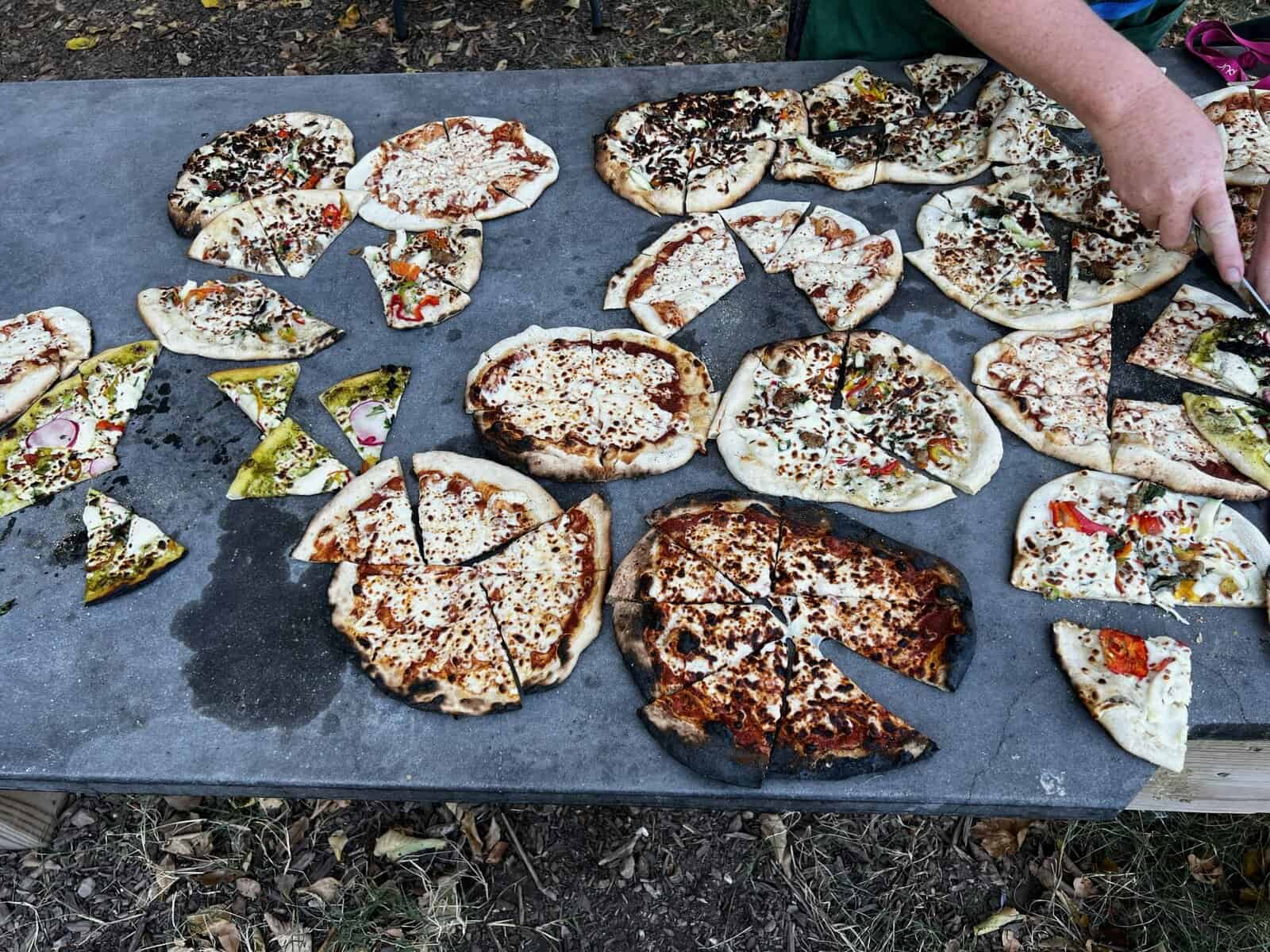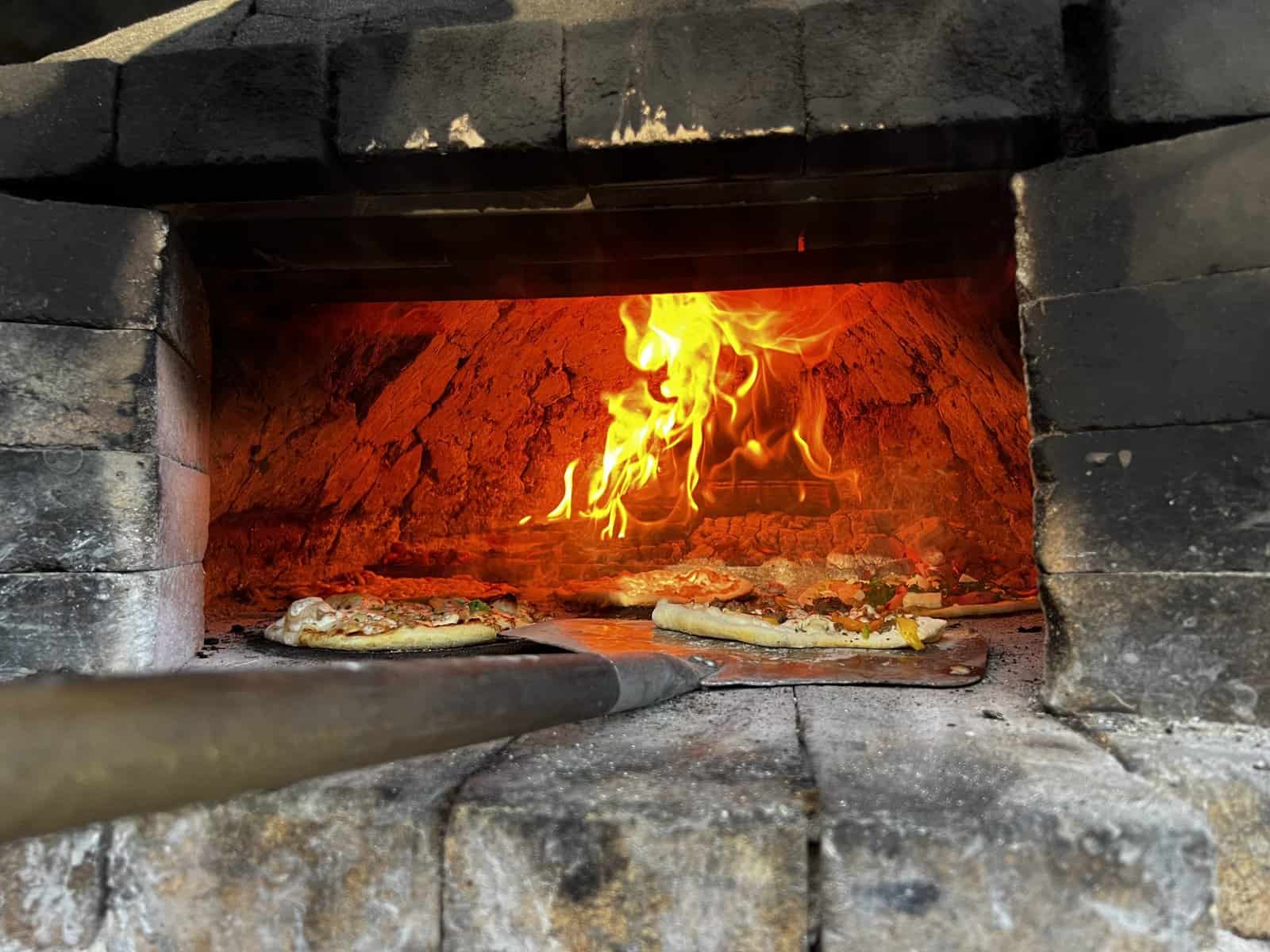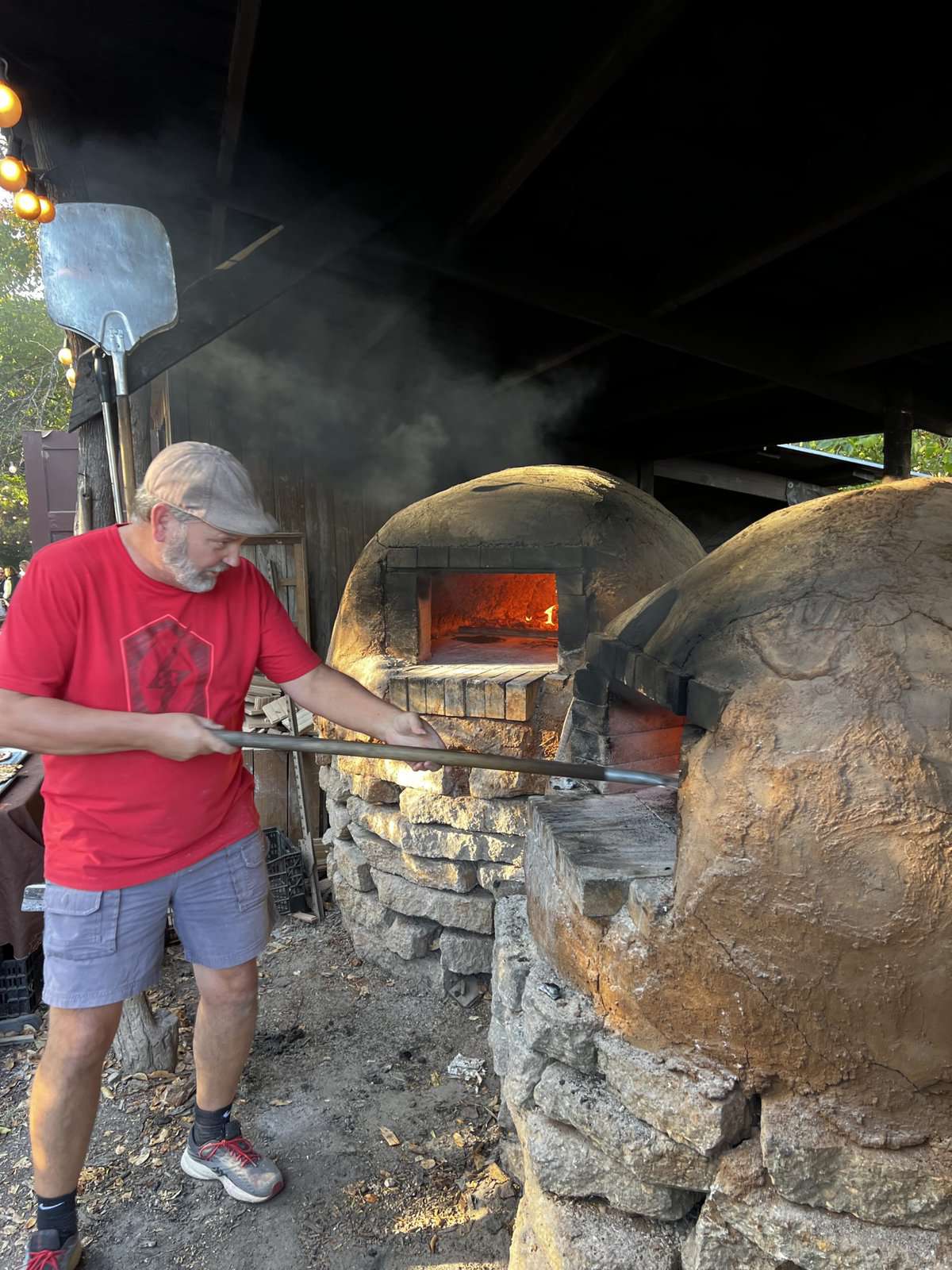
Written by Kristine Hansen
Photos courtesy of Millsap Farms
It’s no secret that autumn is harvest time for vegetables. But in Wisconsin and other states where farming is a way of life, it’s also when some farms host pizza nights where ingredients, including cheese, and even the flour to make the pizza dough is sourced from the farm or nearby.
The concept of a pizza farm first popped up in Wisconsin about 15 years ago, and now there are just under 10 farms hosting pizza nights in the Dairy State. Other states have also adopted the concept, which provides pizza- and cheese-lovers a pastoral environment, often with live music, outdoor games and craft beverages (also locally derived) for a fun night out.
The cheeses on these pizzas are often hard to find at a local cheese shop or grocer as it’s the result of the farm forging a relationship with the creamery, and that they are in small quantity.


Curtis Millsap—co-owner with his wife, Sarah, of Millsap Farms in Springfield, Missouri—is nearly apologetic about how he isn’t making his own cheese. Instead, he sources feta and chèvre from Terrell Creek Farm, 40 miles away in Fordland, Missouri, and blends it with mozzarella for a unique flavor. “They’re long-time friends. We’ve been using their cheese since we started pizza nights in 2013,” he says. Organic vegetables harvested from the farm are also woven into the pizza recipes, such as on the “Saved from the Freeze” pizza where bell peppers, herbs and green tomatoes are—as the name suggests—used while fresh, instead of popping into the freezer. Cooking pizzas at 800°F in a New Mexico-style Horno wood-fired earthen oven results in a pie with a perfectly crisp crust and molten cheese.
Each pizza takes only three minutes to cook and four different varieties are served buffet-style in the open air. The Millsaps have streamlined the process for members of their Pizza Club so no one has to wait too long for their pizza. Membership consists of signing up for one pizza night, with the first dollar going towards the fee. Guests bring blankets to cozy up with and create an impromptu picnic as tables often fill up fast. Outdoor games like soccer and tetherball are kid-friendly. On the stage, bands perform rock covers and songs with a more chill singer-songwriter vibe. Also, bring-your-own beverages ensures everyone has their preferred vice. “Generally, we have a sold-out crowd,” says Millsap.
At the certified-organic Stoney Acres Farm in Athens, Wisconsin, owner Tony Schultz is a true pizza-farm veteran, now in his twelfth season. “The theme of my pizza farm is local,” he says. “It’s locally intense.” To that end, the cheese for the pizza—high-moisture mozzarella—comes from Nasonville Dairy in Marshfield, which been in business since 1855.
“It’s cheese from my neighbors,” says Schultz. “Everything comes from the farm except for the cheese. It’s not organic but I’d rather have the most local cheese from my neighbors.” And given that it’s only up the road, that cheese can’t come from any closer. Occasionally he’ll turn to cheeses from other Wisconsin creameries, such as BelGioioso Cheese’s fresh mozzarella, LaClare Creamery’s chèvre or Carr Valley Cheese’s blue cheese, which is a key ingredient for the “SauceSquash” pizza. On that pizza, the sauce is a butternut-squash base, not tomato, and toppings include onion and flecked ham. Like Schultz, who is the third-generation owner of his farm, all three of these creameries are family-owned businesses that have employed multiple generations over the years.
The reason Stoney Acres Farm is “intensely local” is because more than the pizza’s toppings come from the farm. Also on site is Stoney Acres Brewery, now in its fifth year, which brews “everything from a light lager to saison [beers] to sours to IPAs,” says Schultz. A beer hall with indoor seating for 170 people provides a festive spot to sample them.
Pizza nights also give visitors a view into farm life. “This is a working farm,” Schultz says. “Most of the week I’m raising vegetables and pigs. There are chickens walking through the yard and cows are grazing. I’m [actually] making pizza sauce right now.” Of the farm’s 120 pigs, about 90 of them provide pepperoni, sausage, and ham for the pizzas. Schultz’s “secret sauce” for the sausage is flavoring it with fennel.
During the early stages of the COVID-19 pandemic, when hosting people at the farm became limited, Schultz launched a line of frozen pizzas sold through the farm and at local retailers. These also are topped with Wisconsin cheese.
Red Barn Farm in Northfield, Minnesota, is another pizza farm that ticks all the boxes in offering a local experience. All pizzas are topped with parmesan and mozzarella cheese. On occasion Shepherd’s Way Farms Big Woods Blue is used, sourced from the nearby sheep’s-milk creamery. That cheese took a first-place award at the American Cheese Society’s 2017 conference. “We grow our own veggies, primarily tomatoes, bell peppers, jalapeno peppers, onions and basil and other veggies, that may fit into a fun Pizza of the Week. We [also] use pork sausage from Nerstrand Meats in nearby Nerstrand,” says owner Tammy Winter. Live music rounds out the fun on many Wednesdays and guests can hang with “two rescue horses and many chickens,” she says.
There are twists to the pizzas at Red Barn Farm you’re not likely to find on any pizzeria’s menu, such as sauerkraut—an ingredient that’s a huge hit in the Upper Midwest—on the “Sour Pig,” along with olive oil, sausage, and onions.

Not far from there, Luna Valley Farm in Decorah, Iowa, is a certified-organic, regenerative farming operation opening their veritable doors to pizza lovers on Friday and Saturday nights. Pizzas are baked in a wood-fired oven. Not ready to go home? The farm recently began hosting guests overnight in its two glamping tents. “All of our fresh mozzarella is BelGioioso which isn’t super local to us but is from Wisconsin,” says owner Maren Beard. “We also occasionally use Montchevre Goat Cheese Crumbles on a few of our pizzas.” That cheese is also from the neighboring state of Wisconsin.
“We raise a few pigs and use all of our own Italian sausage on pizza,” says Beard. “We also use our Canadian bacon and have occasionally put carnitas on a pizza, which we make from our pork shoulders.” Another ingredient in their culinary wheelhouse is grass-fed finished lamb. Pepperoni comes from Driftless Provisions in nearby Viroqua, Wisconsin. And the vegetable toppings are anything but typical. Instead, butternut squash and kale from their own garden are joined with ingredients such as shiitake mushrooms, jalapenos, pears, honey, and pea shoots from neighboring farms, creating a full roster of toppings choices that invite nearly an endless variety of combinations. Pizza ingredients rotate with the seasons, such as—in August—sweet corn, tomatoes, jalapenos and their Italian sausage atop cilantro crèma. In addition, the Beards recently started pouring wines that are not from California or Europe but from the Midwest, working with the American Wine Project in Mineral Point, Wisconsin.
Some farms will even go so far as to make their own dough from grains grown on site. This is the case at Stoney Acres Farm—which harvests its whole organic spring wheat—and also Full Belly Farm, a certified-organic farm in Guinda, California. That farm even makes its own ice cream and serves it during pizza nights—a sweet match with a farm-made pizza. At 9 Miles East Farm in Saratoga Springs, New York, the pizza crust is born out of sourdough slow-fermented on the farm for three days and folds in flour from Farmer Ground Flour. Next, it’s topped with cheese crafted in Central New York, not far from the farm, and the sauce made from the farm’s tomatoes that are first roasted and then turned into sauce.
Whether it’s the tomato sauce, the cheese, or other toppings, these pizza nights are showcases of what’s grown locally. “One of my favorite things about doing pizza nights is having the opportunity to highlight ingredients grown on our farm and on other local farms,” says Beard.

IF YOU GO: Where to find pizza on the farm
- MISSOURI: Millsap Farms, Springfield – Thursdays from early May through late October
- WISCONSIN: Stoney Acres Farm, Cambridge – Fridays and Saturdays from first weekend in April through late November
- Sprouting Acres Farm, Cambridge – The first and third Sundays of the month from May through October
- IOWA: Luna Valley Farm, Decorah – Fridays and Saturdays from May through October
- CALIFORNIA: Full Belly Farm, Guinda – Fridays and Saturdays from July through October
- MINNESOTA: Red Barn Farm, Northfield – Wednesdays and the third Sunday of each month from May through October
- NEW YORK: 9 Miles East Farm, Saratoga Springs – Pizza served year round in the farm’s café daily.




